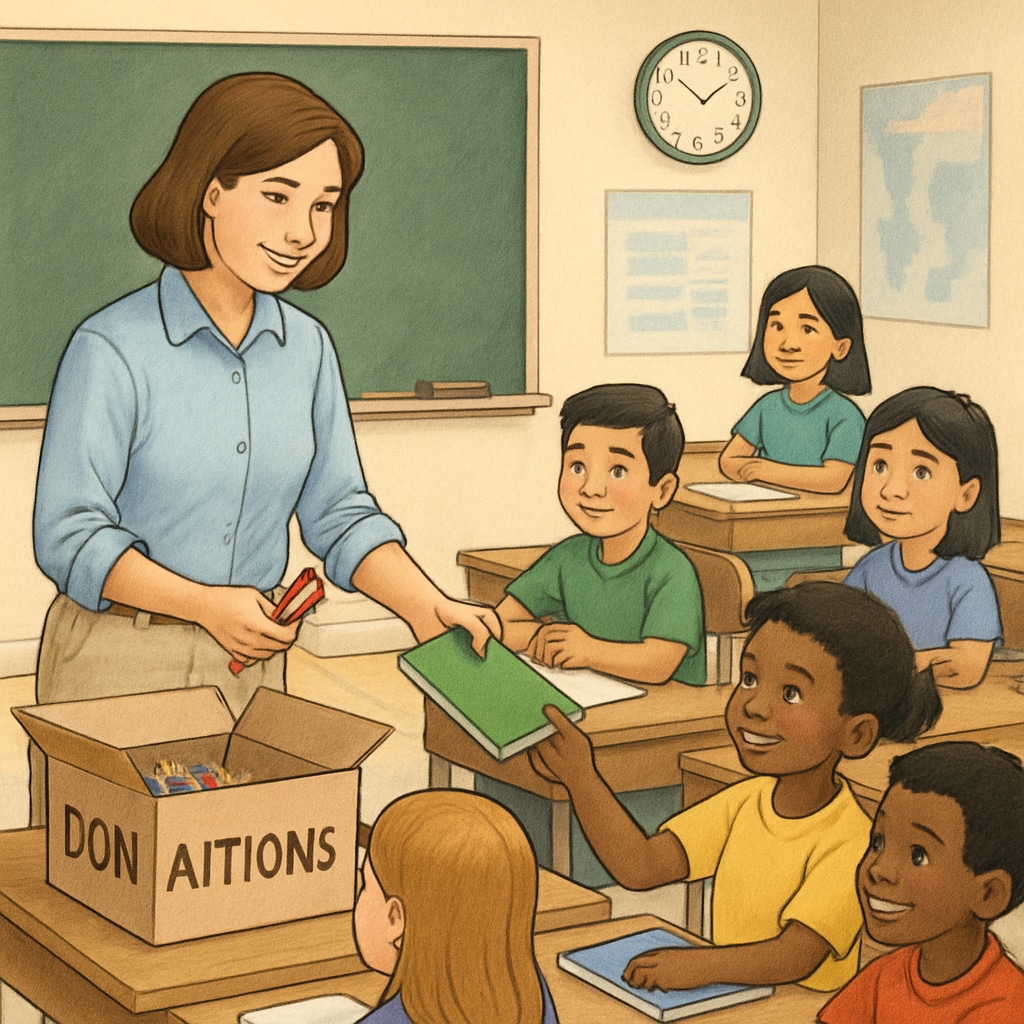In today’s educational landscape, K-12 schools often face resource shortages that directly impact students’ learning experiences. Many teachers, determined to provide quality education, spend their personal funds to purchase basic classroom supplies. This growing issue highlights the urgent need for teacher support, donations, and classroom resources to ensure an equitable and effective learning environment for every student. With the power of small donations and community involvement, we can bridge these gaps and help educators succeed.
Understanding the Need for Teacher Support
Teachers play a critical role in shaping the future of society, yet they often work in underfunded environments. According to a U.S. Department of Education study, a significant percentage of teachers spend hundreds of dollars annually on classroom supplies. These expenses include everything from stationery to books, and even technology tools to enhance students’ learning. Unfortunately, this burden falls disproportionately on educators in lower-income areas, where schools lack the necessary funding to provide adequate resources.
For example, a teacher in a rural school district may use personal savings to buy calculators for a math class or art supplies for creative projects. While these contributions reflect their dedication, they also reveal a systemic issue: the education system isn’t meeting the basic resource needs of all classrooms. Community-driven solutions, such as small donations from individuals and organizations, can fill these gaps and ease the financial strain on teachers.

How Small Donations Create Big Impacts
Contrary to popular belief, one doesn’t need to make large contributions to have a meaningful impact. Small donations, when pooled together, can significantly improve classroom environments. For instance, platforms like DonorsChoose allow individuals to fund specific projects proposed by teachers. These projects often include requests for essential supplies like notebooks, markers, or science kits, and even innovative tools like coding robots or virtual reality headsets.
A $20 contribution might seem minimal, but it could provide a class with enough pencils for an entire semester. Similarly, a $50 donation could fund a classroom library that inspires children to read. When communities rally around their local schools, the collective power of small donations creates lasting benefits for both teachers and students.

Building a Fair and Efficient Education System
Addressing resource shortages in K-12 education is not only about supporting individual teachers but also about fostering a more equitable education system. Students from underprivileged communities often face additional barriers to success, including outdated textbooks, limited access to technology, and overcrowded classrooms. By providing adequate resources, we can create a level playing field where every child has the tools they need to thrive.
Moreover, supporting teachers through donations reduces burnout and increases job satisfaction. Teachers who feel valued and equipped are more likely to stay in the profession, leading to better outcomes for students. In addition, community involvement in education cultivates stronger relationships between schools and neighborhoods, creating a sense of shared responsibility for student success.
Ways to Get Involved
Wondering how you can make a difference? Here are some simple ways to support teachers and classrooms:
- Donate to crowdfunding platforms: Websites like DonorsChoose and AdoptAClassroom.org allow you to contribute directly to classroom projects.
- Organize supply drives: Collect essential items like notebooks, pencils, and art supplies through your workplace, community group, or place of worship.
- Volunteer your time: Offer to assist teachers in the classroom or help with after-school programs.
- Advocate for better funding: Reach out to local policymakers and advocate for increased investments in education.
- Spread awareness: Share stories of teachers and schools in need on social media to inspire others to take action.
These small acts, when combined, can create a ripple effect that transforms entire communities and improves educational opportunities for generations to come.
In conclusion, the challenge of resource shortages in K-12 education requires collective action. By supporting teachers through small donations, community efforts, and advocacy, we can ensure that every child has access to a high-quality education. Let’s work together to empower educators, enrich classrooms, and brighten the future of our society.
Readability guidance: This article uses short paragraphs, clear transitions, and actionable tips to maintain reader engagement. The language is accessible while incorporating essential details, ensuring the content resonates with a broad audience.


